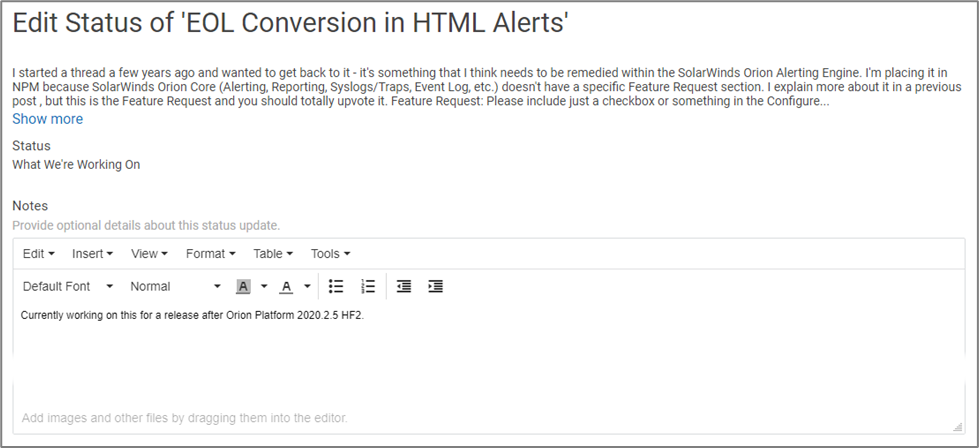Background
The THWACK team owns/operates a set of redirection links hosted off https://thwack.com. The lack of ‘solarwinds.com’ in the URL is intentional. This is the same site where ‘Vanity URLs’ are built (e.g. https://thwack.com/npm) and maintained.
This site is independent of the main THWACK pages hosted on https://thwack.solarwinds.com and the architecture is maintained by the combined effort of the THWACK and Web Dev teams.
WWWO Linking Overview
There is a parent-level list that exists at https://thwack.com/wwwo which lives within the THWACK Command Center. Within that post are links to the respective other product WWWO pages.
In additional the group landing page contains two links to the WWWO page.
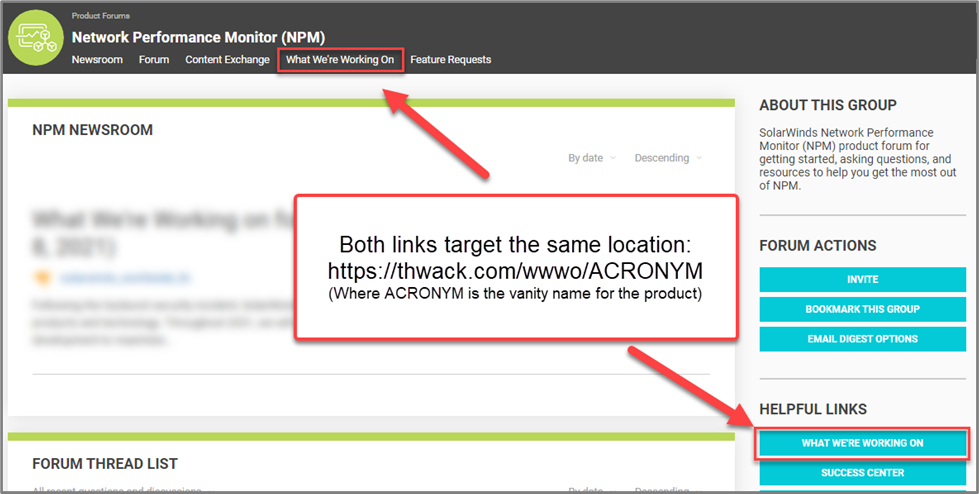
Update existing vs. New WWWO
It’s entirely up to the discretion of the product manager between updating an existing WWWO page versus creating a new one. These are the THWACK team’s recommendations:
- If your release is a ‘large’ release (either ‘major’ version number for installed products or major functionality change for SaaS products), then this would benefit from a new WWWO post. This will ‘reset’ the comments below the entry.
- If this is a small incremental change (service release, hotfix, single function only), it may be best to update the existing WWWO page. This will maintain the existing comments on said post.
Updating an existing WWWO page
When editing an existing WWWO page, the author will remain unchanged. Make edits as necessary and click Post to complete the update.
Creating a new WWWO page
This is a two-step process – first updating the slug from the previous WWWO post and then posting the new and setting the slug.
Previous WWWO Page
Remove the existing Post URL for the current WWWO page. To do so, edit the existing WWWO page, note the date of the WWWO as displayed in the title and then go to the Options tab at the top.
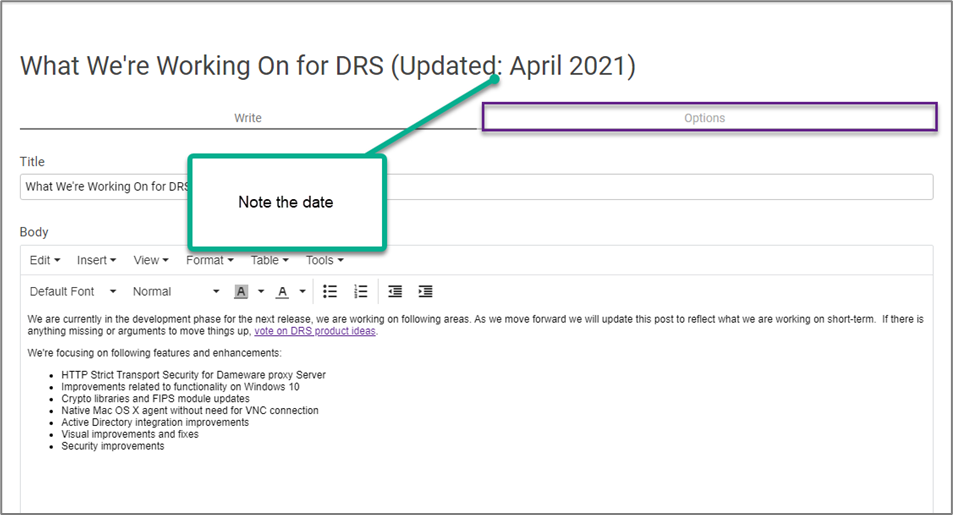
Under Options, append the date (in MMM YYYY format as lowercase) to the ‘Post URL’ field. Only use alphanumeric characters and spaces. Do not include dashes, slashes, parenthesis, or other formatting in this field.
Save the post by clicking Post.
Web Cache Notice: This change needs to be in place for approximately 30 minutes for the web caches to expire so that the new 'wwwo' slug can be added to the new post.
New WWWO Page
Within your product Newsroom, create a new post. On the new WWWO page, put in the contents as typical, including links to any supporting documents, feature requests that have been moved to “WWWO” for this upcoming release, or other notable content.
The title should be in the format:
What We’re Working On for <Acronym> (Updated: MMM d, yyyy)
Do not post in all caps or use “What we are” in the title. If your product does not have an acronym, use the full name (i.e. “SQL Sentry”).
Be sure to include (at minimum) the “roadmap” keyword.
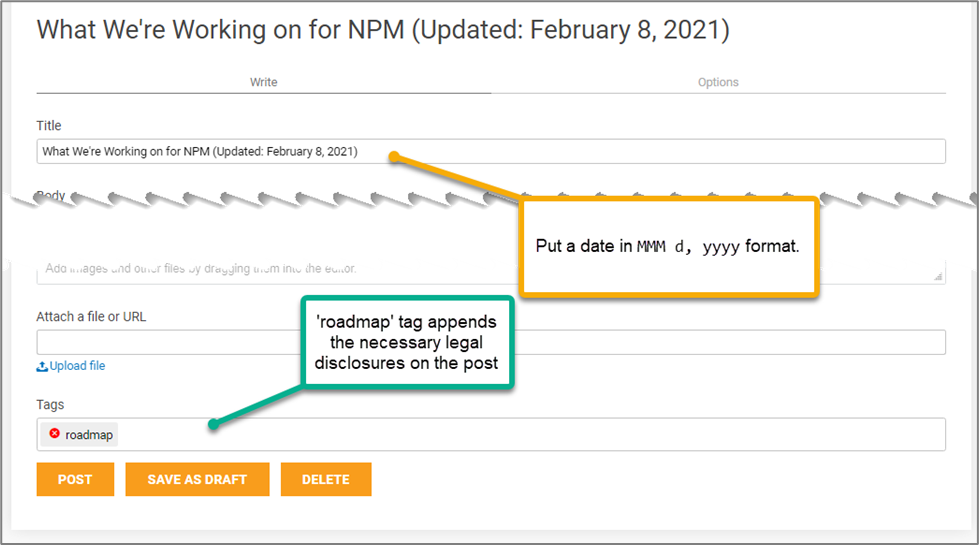
On the options page for the new post put ‘wwwo’ in for the Post URL (the same place where you changed it in the previous post.)
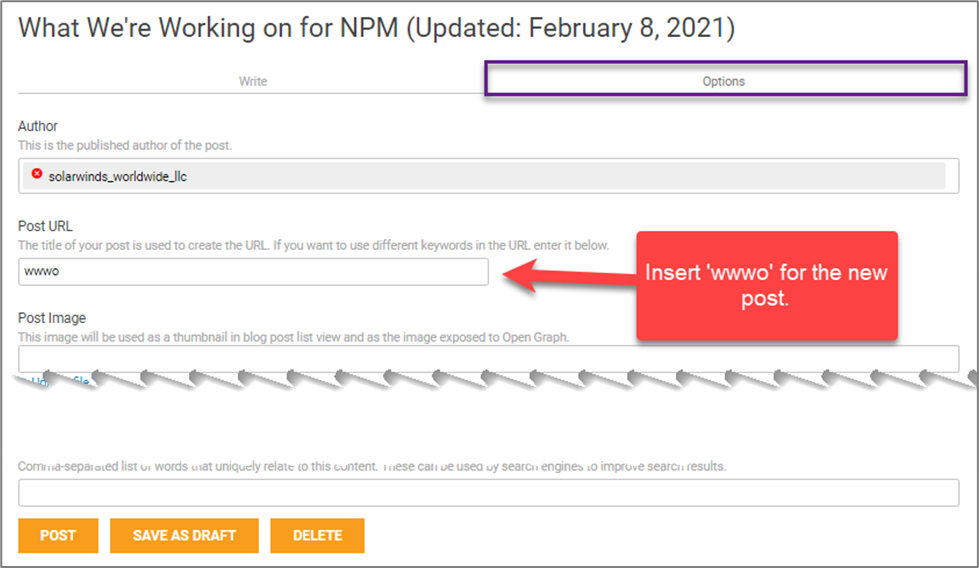
If done correctly and the web caches have had time to expire, all links (including the vanity URLs) should automatically pick up the new blog entry.
Post Image – use the pre-approved WWWO image. The Release-Related post Images are stored the THWACK Community Team's SharePoint site: Default Blog Images \ Product Release.
Additional Best Practices
Sign up for notifications
Encourage the members to subscribe to the newsroom content to stay up to date.

Link to the Product FR’s
Add a link to the product’s Feature Request space for making additional requests.

Call out FR’s being Developed
If Feature Requests directly influenced WWWO elements, update the FR’s status to “WWWO,” put in a note, and link from within the WWWO post. FR’s in the WWWO state can still be voted on.

